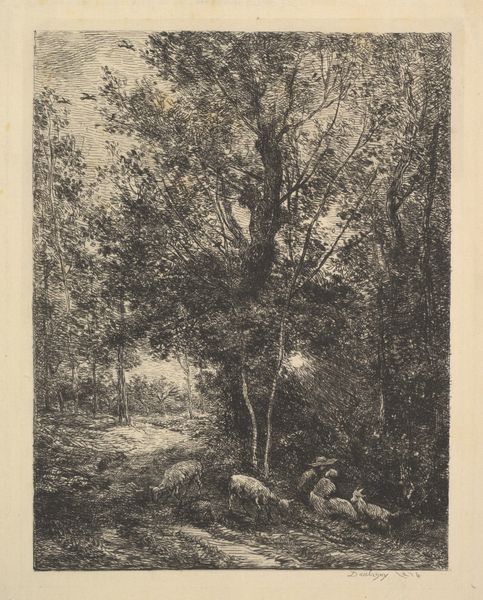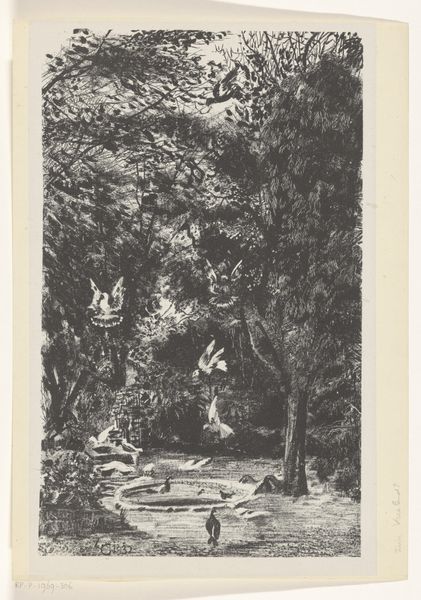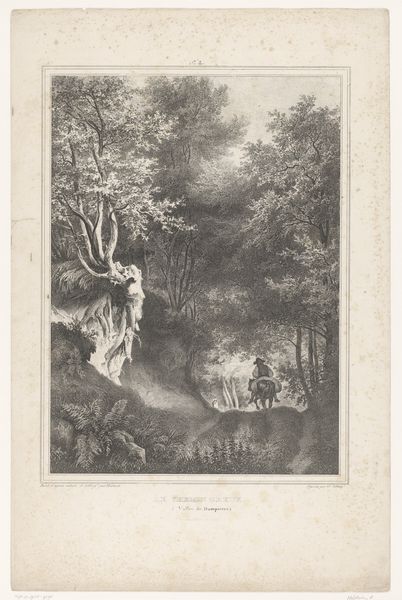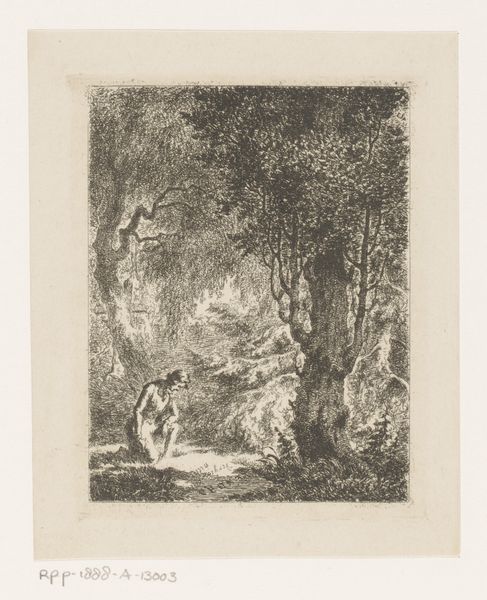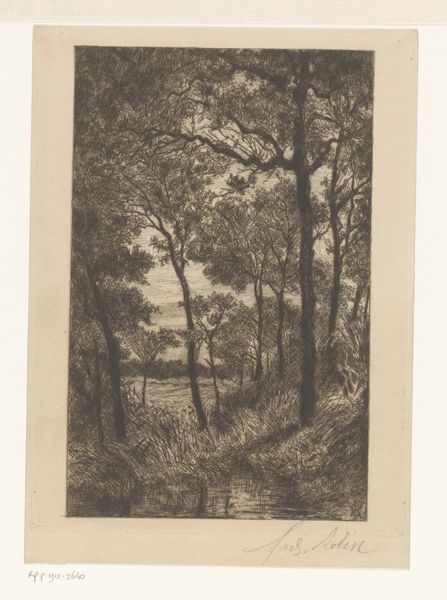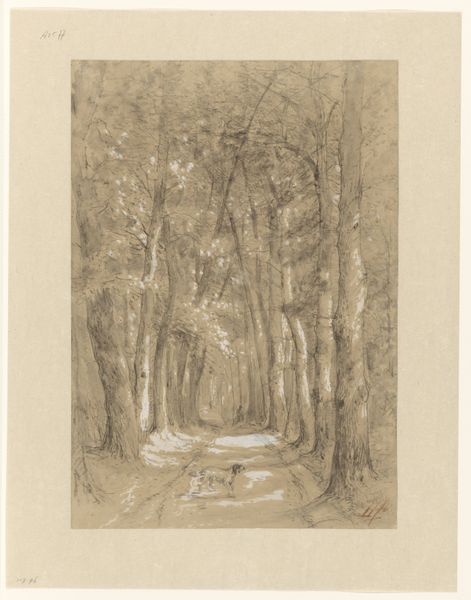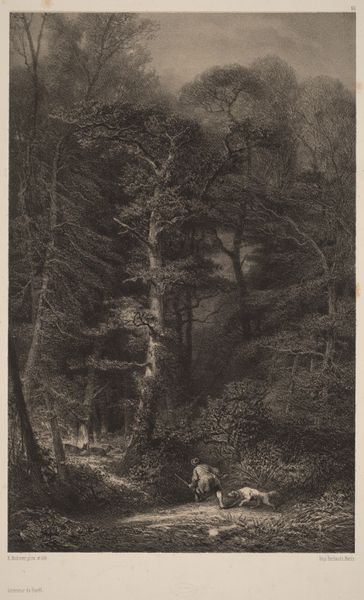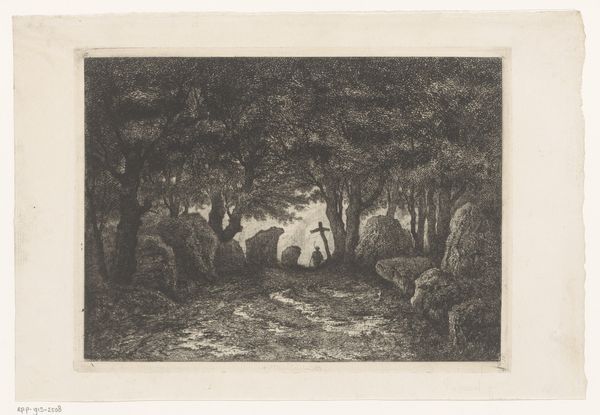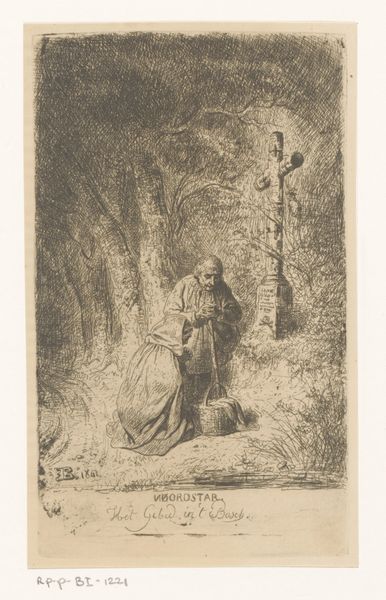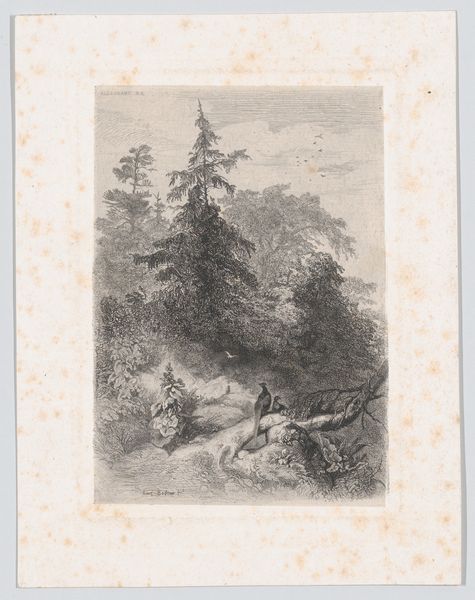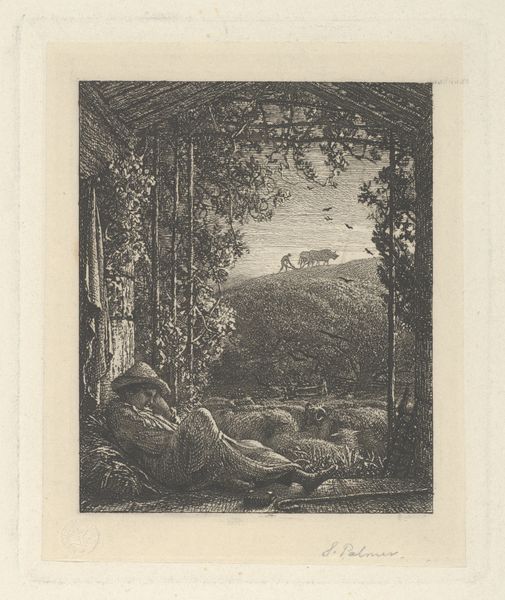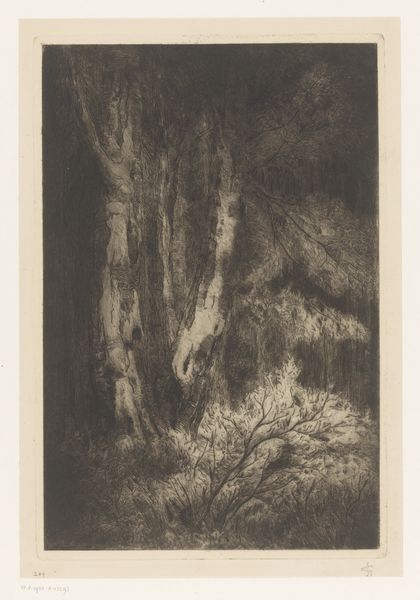
Two women in a clearing in the woods, one holding a parasol, the other seated in the grass 1870 - 1891
0:00
0:00
drawing, print
#
drawing
# print
#
landscape
#
forest
#
ink drawing experimentation
#
genre-painting
#
realism
Dimensions: Sheet (trimmed): 9 5/8 × 6 9/16 in. (24.4 × 16.7 cm)
Copyright: Public Domain
Curator: Looking at this, I immediately think of a hushed intimacy. It's rendered in such careful lines; there’s an understated tension in how close yet separate these figures are. Editor: Marcel Blairat created this ink drawing and print, "Two women in a clearing in the woods, one holding a parasol, the other seated in the grass," sometime between 1870 and 1891. Its current home is the Metropolitan Museum of Art. To me, it highlights the shift in printmaking's role as a medium; its function transcending the limitations of simple replication. Curator: Absolutely. And the forest, rendered with almost overwhelming detail, creates an enclosed space, a retreat. Parasols, during this era, are so heavy with significance. Beyond a practical use to avoid sunburn, here it acts as almost like a symbolic screen, between them and the outside world, as a barrier defining social interaction. Editor: Agreed. Consider too, how much the drawing captures this particular moment in industrial capitalism; labor moving further outside the home and the print facilitates wider accessibility. Blairat's technique with the ink and his approach to mark-making blurs those conventional distinctions of 'high' and 'low' art as such, forcing one to reconsider where value is actually made. Curator: Speaking of value, even something as simple as their dresses are deeply embedded within a Victorian context. They tell of modesty, constraint, and a particular feminine ideal but almost in contrast is the one without the parasol seated directly on the ground! Blairat's playing with ideas of conventional feminine roles set against a backdrop of pastoral nature and perhaps an underlying yearning for more simplistic times, prior to industry and social expectation. Editor: Yes, these figures and the location were manufactured via tools available for drawing, as well as tools to make prints for larger production; each figure placed on the page, carefully, as part of a mechanical operation. Blairat takes nature and the women's relationship and then reproduces these images for a consumer. What value exists in the original moment versus the consumption of printed matter? Curator: I see a visual record loaded with Victorian notions of decorum but the composition invites more reading below the surface. It's that play that captures our eye. Editor: Indeed, from the method to the social themes portrayed, there's an important story embedded in both form and content.
Comments
No comments
Be the first to comment and join the conversation on the ultimate creative platform.
